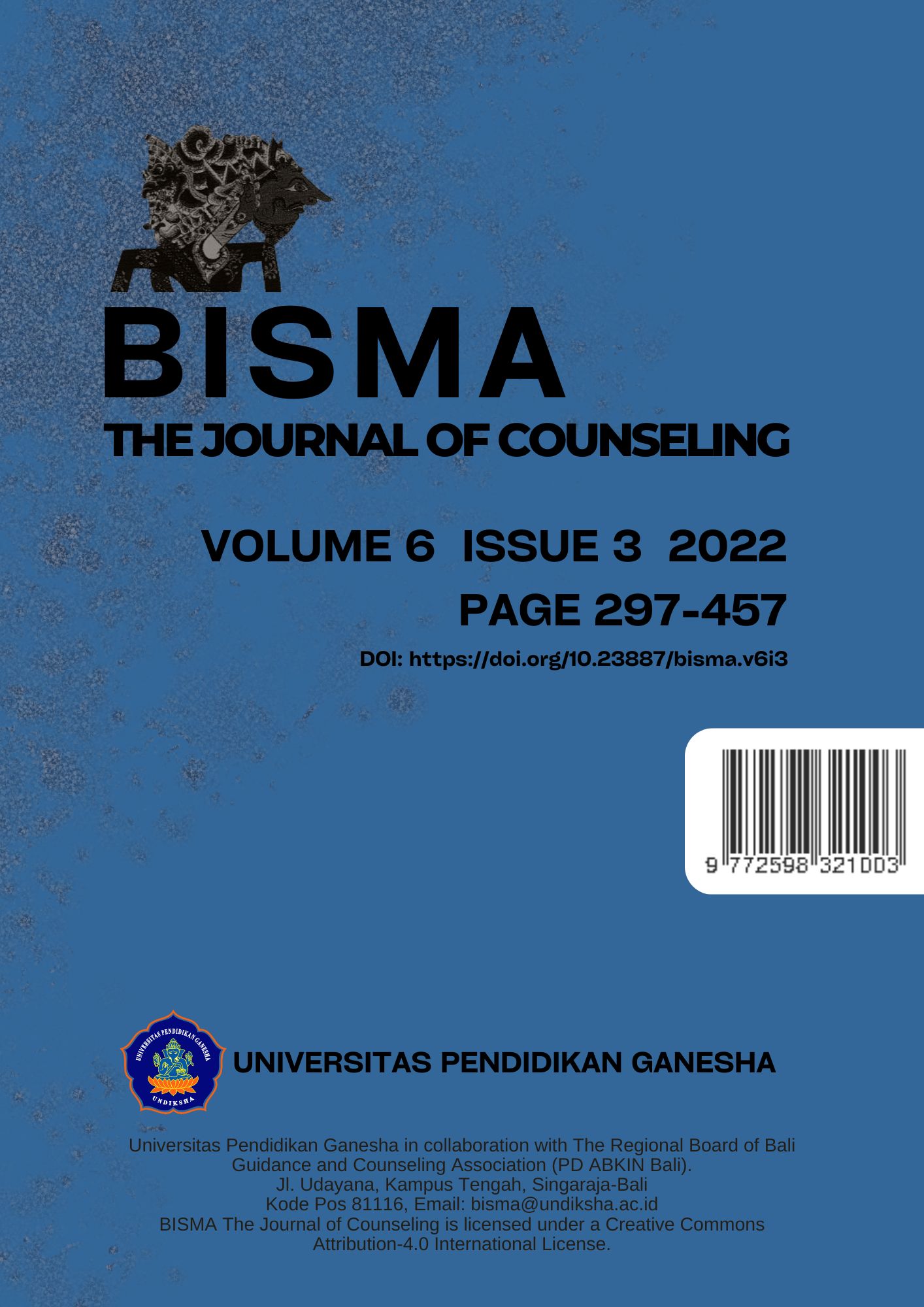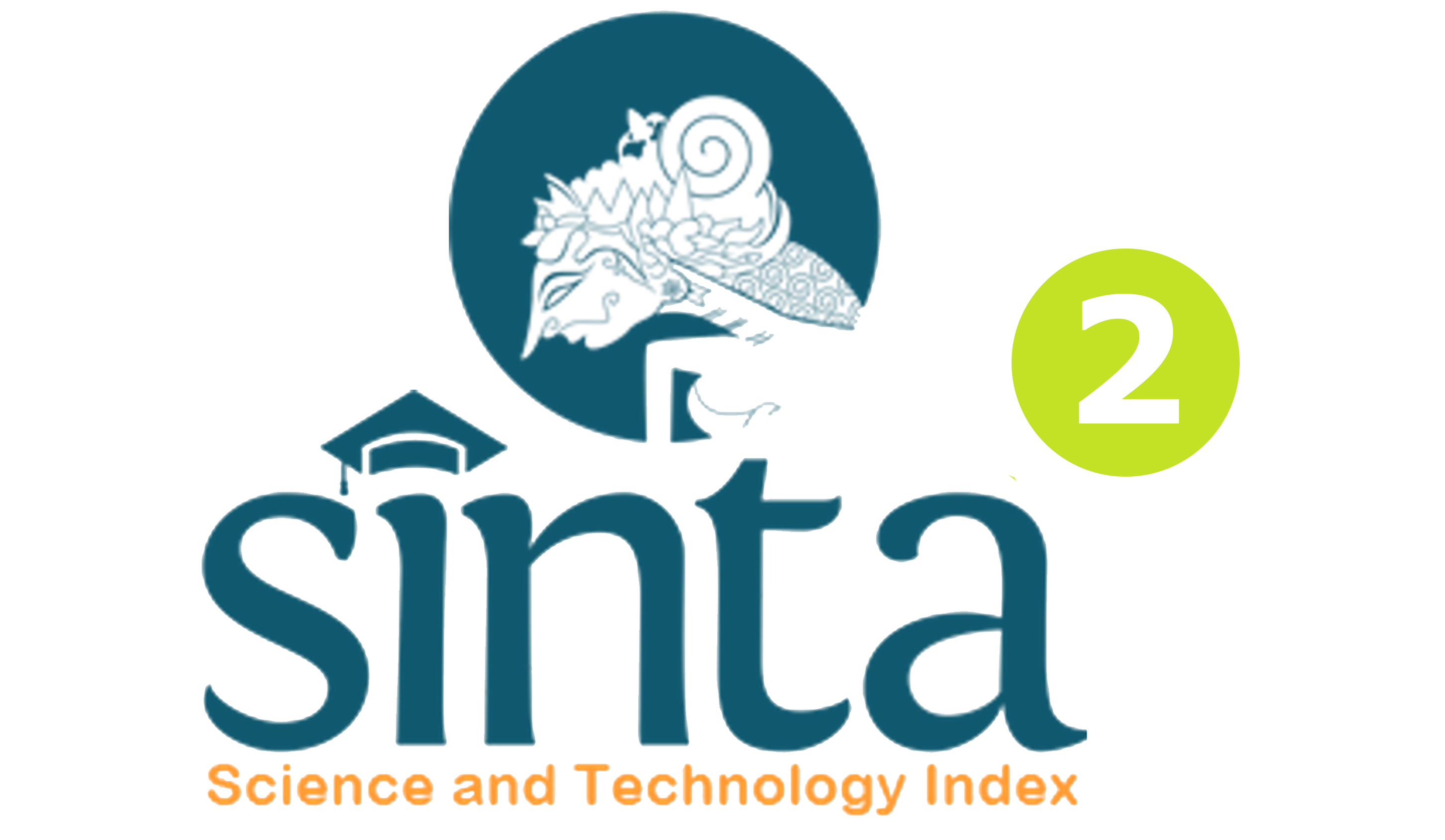Bullying Prevention Through Gestalt Approach Using Group Setting In Increasing Self-Control
DOI:
https://doi.org/10.23887/bisma.v6i3.53196Keywords:
Gestalt Approach, Self control, BullyingAbstract
This study aims to determine the effectiveness of implementing the Gestalt Setting Group counseling approach to improve self-control in preventing student bullying. The population of this study were students of SMKN 1 Padang. The sample in this study was the students of SMK N 1 chosen by random cluster sampling. This type of research was experimental with a Quasy-Experiment control group design. The instrument used is a self-control questionnaire in bullying prevention using a Likert scale. Data were analyzed using the Wilcoxon Signed Ranks Test and SPSS version 21.00. The results showed that in the experimental group before being given the Gestalt setting counseling approach, the average pretest score of the group was 138.6, and after being given the Gestalt setting counseling approach the group's average posttest score increased to 187.33. However, in the control group, the pretest score was 134.4, and after being given the Gestalt setting counseling approach to the group, the group's average posttest score increased to 136.4. It can be concluded that "there is a significant difference in student self-control between the experimental and control groups"
References
Adriany, V. (2019). ‘I don’t want to play with the Barbie boy’: Understanding Gender-Based Bullying in a Kindergarten in Indonesia. International Journal of Bullying Prevention, 1(4), 246–254.
Allom, V., Panetta, G., Mullan, B., & Hagger, M. S. (2016). Self-report and behavioural approaches to the measurement of self-control: Are we assessing the same construct? Personality and Individual Differences, 90, 137–142.
Arifin, I., Putri, S. N., & Apriliyanti, N. A. (2021). TERAPI ISTIGHFAR SEBAGAI SOLUSI UNTUK MENCEGAH BULLYING DIKALANGAN PELAJAR. Jurnal Psikologi Islam, 8(1).
Bhukhanwala, F. (2014). Theater of the Oppressed in an After-School Program: Middle School Students’ Perspectives on Bullying and Prevention: This Article Examines Students’ Participation in Boalian Theater Activities to Role-Play, Rehearse, and Develop Strategies to use When Bullied or Witnessing Bullying. Middle School Journal, 46(1), 3–12.
Borualogo, I. S., & Casas, F. (2021). Subjective well-being of bullied children in Indonesia. Applied Research in Quality of Life, 16(2), 753–773.
Bowes, L., Aryani, F., Ohan, F., Haryanti, R. H., Winarna, S., Arsianto, Y., Budiyawati, H., Widowati, E., Saraswati, R., & Kristianto, Y. (2019). The development and pilot testing of an adolescent bullying intervention in Indonesia–the ROOTS Indonesia program. Global Health Action, 12(1), 1656905.
Cahyani, R. (2019). DISCRIMINATION AND BULLYING IN AN ELEMENTARY SCHOOL IN JAVA INDONESIA. Current Politics and Economics of South, Southeastern, and Central Asia, 28(2/3), 257–306.
Chu, B. C., Hoffman, L., Johns, A., Reyes-Portillo, J., & Hansford, A. (2015). Transdiagnostic behavior therapy for bullying-related anxiety and depression: Initial development and pilot study. Cognitive and Behavioral Practice, 22(4), 415–429.
Chui, W. H., & Chan, H. C. O. (2013). Association between self-control and school bullying behaviors among Macanese adolescents. Child Abuse & Neglect, 37(4), 237–242.
Chui, W. H., & Chan, H. C. O. (2015). Self-control, school bullying perpetration, and victimization among Macanese adolescents. Journal of Child and Family Studies, 24(6), 1751–1761.
Corrado, R. R., DeLisi, M., Hart, S. D., & McCuish, E. C. (2015). Can the causal mechanisms underlying chronic, serious, and violent offending trajectories be elucidated using the psychopathy construct? Journal of Criminal Justice, 43(4), 251–261.
Cudo, A., Torój, M., Demczuk, M., & Francuz, P. (2020). Dysfunction of self-control in Facebook addiction: Impulsivity is the key. Psychiatric Quarterly, 91(1), 91–101.
Einarsen, S. V., Hoel, H., Zapf, D., & Cooper, C. L. (2020). The concept of bullying and harassment at work: The European tradition. In Bullying and harassment in the workplace (pp. 3–53). CRC press.
Espelage, D. L., Hong, J. S., Kim, D. H., & Nan, L. (2018). Empathy, attitude towards bullying, theory-of-mind, and non-physical forms of bully perpetration and victimization among US middle school students. Child & Youth Care Forum, 47(1), 45–60.
Fernández, M. V. C., Fernández, M. L., Castro, Y. R., Garrido, J. M. F., & Otero, M. C. (2013). Bullying in Spanish secondary schools: Gender-based differences. The Spanish Journal of Psychology, 16.
Gamble Blakey, A., Smith-Han, K., Anderson, L., Collins, E., Berryman, E., & Wilkinson, T. J. (2019). Interventions addressing student bullying in the clinical workplace: a narrative review. BMC Medical Education, 19(1), 1–13.
Goleman, D., Boyatzis, R., Davidson, R. J., Druskat, V., & Kohlrieser, G. (2017). Empathy: A Primer (Building Blocks of Emotional Intelligence Book 6). Florence, MA: More Than Sound LLC.
Hopkins, L., Taylor, L., Bowen, E., & Wood, C. (2013). A qualitative study investigating adolescents’ understanding of aggression, bullying and violence. Children and Youth Services Review, 35(4), 685–693.
Litwiller, B. J., & Brausch, A. M. (2013). Cyber bullying and physical bullying in adolescent suicide: the role of violent behavior and substance use. Journal of Youth and Adolescence, 42(5), 675–684.
Naseer, S., Raja, U., Syed, F., & Bouckenooghe, D. (2018). Combined effects of workplace bullying and perceived organizational support on employee behaviors: does resource availability help? Anxiety, Stress, & Coping, 31(6), 654–668.
Patchin, J. W., & Hinduja, S. (2015). Measuring cyberbullying: Implications for research. Aggression and Violent Behavior, 23, 69–74.
Piola, W. S., Ali, L., & Rokani, M. (2022). The Effect of Health Education Using Video Media on Knowledge About Bullying in Class VII Students of SMPN 1 Dungaliyo. Journal of Community Health Provision, 2(1), 69–72.
Pratiwi, A. R. (2020). Social Adjustment In School In Adolescents Who Have School Bulying. Journal Basic Science and Technology, 9(1), 1–8.
Rua, T., Lawter, L., & Andreassi, J. (2017). Desire to be ethical or ability to self‐control: Which is more crucial for ethical behavior? Business Ethics: A European Review, 26(3), 288–299.
Runions, K. C. (2013). Toward a conceptual model of motive and self-control in cyber-aggression: Rage, revenge, reward, and recreation. Journal of Youth and Adolescence, 42(5), 751–771.
Sariçam, H., Yaman, E., & Çelik, İ. (2016). The mediator effect of loneliness between perceived social competence and cyber bullying in Turkish adolescents. International Journal of Progressive Education, 12(1), 99–107.
Xu, M., Macrynikola, N., Waseem, M., & Miranda, R. (2020). Racial and ethnic differences in bullying: Review and implications for intervention. Aggression and Violent Behavior, 50, 101340.
Xu, T., Li, H., Yan, Z., & Zhang, G. (2022). The effects of self-control on bullying behaviour among martial arts practicing adolescents: based on the analyses of multiple mediation effects. International Journal of Sport and Exercise Psychology, 1–14.
Yusuf, A. M. (2013). Metode Penelitian Kualitatif, Kuantitatif dan Penelitian Gabungan (Pertama). Jakarta: Renika Cipta.
Downloads
Published
Issue
Section
License
Copyright (c) 2022 Firman, Zikryersya, Yeni

This work is licensed under a Creative Commons Attribution 4.0 International License.









